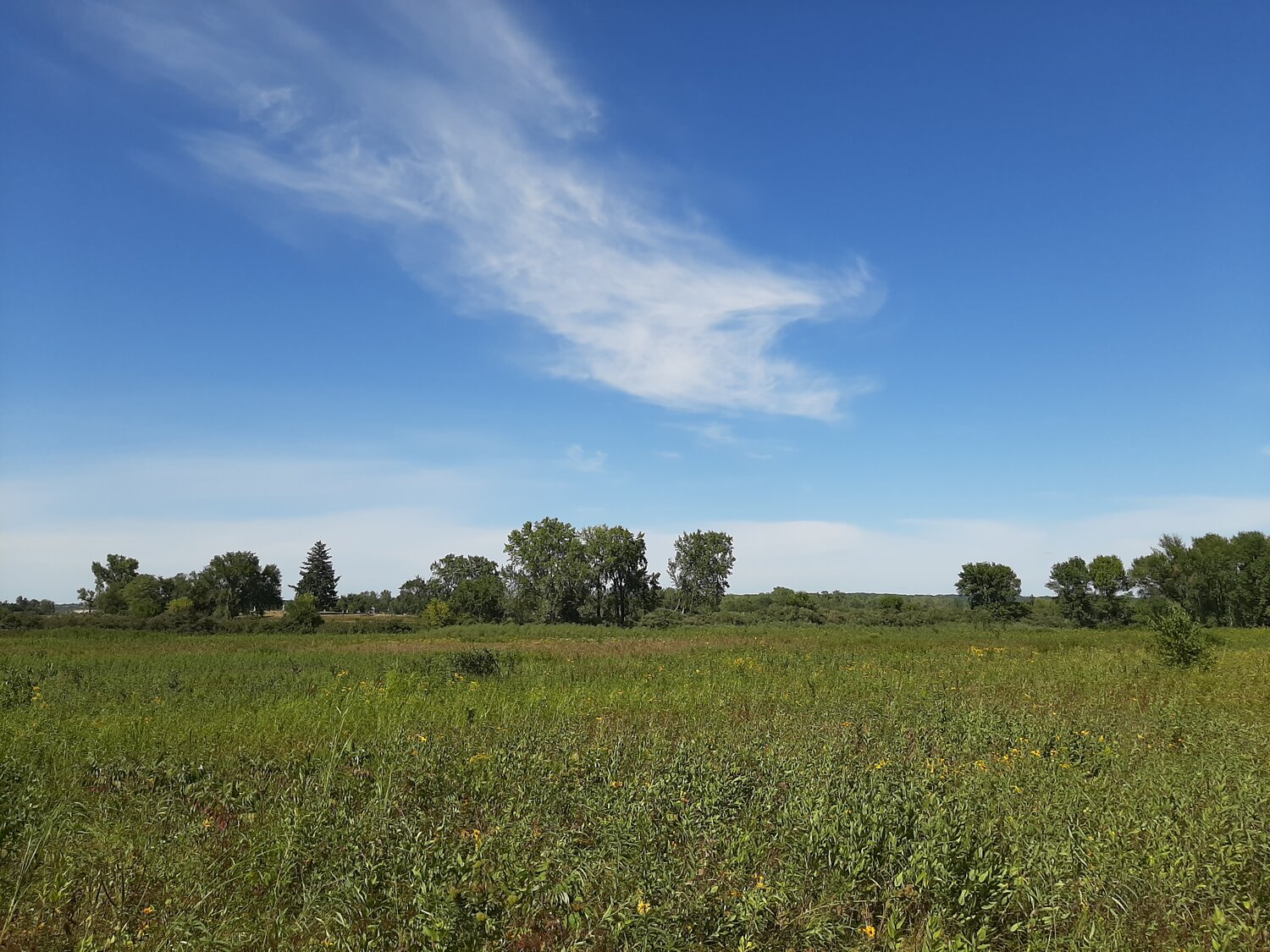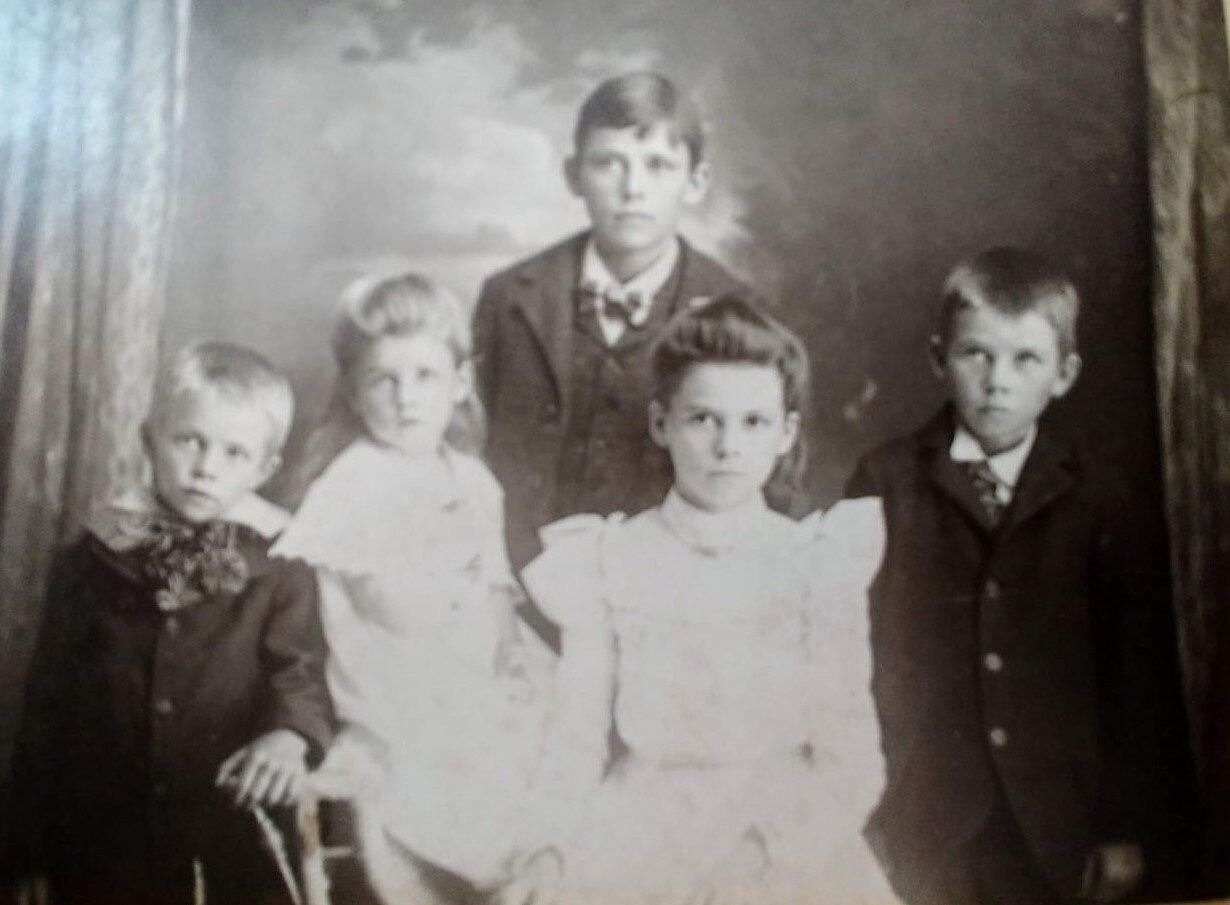My Kentucky Ancestors, Part 3
(Swiss colonists at Bernstadt, Laurel County, Kentucky, ca. 1881)
My grandmother Margaret (Muster) Duer was born in 1888 in the eastern Kentucky town of East Bernstadt. This was a Swiss colony established in 1881 by people suffering from a farm crisis in their native country, either adventurous or desperate enough to buy land sight unseen in the United States. Arriving here in hopes of planting vineyards, they adapted, learning for example to make corn mash moonshine in backwoods stills. My great-grandfather Jacob Muster came from Bern, and my great-grandmother Amelia Blunschi from the Swiss canton of Sankt Gallen. They met and married in Kentucky and brought my gramma into a life caught up in a scrap with the red clay of Appalachia.
The second of seven children, Gramma watched the tiny pine boxes containing a one-year-old brother and a stillborn sister be lowered into that unyielding clay. While Gramma was still in her teens, her father, a skilled interior decorator never able to practice his trade here, died from the bite of a black widow spider. The boys all went to work at the Diamond Coal Mine, a deep-shaft operation managed by their uncle John Blunschi. When her oldest brother, Fred, died a few years later from a burst appendix, Gramma ventured to Cincinnati in hopes of finding work that would help support the family. In its Germantown neighborhood, she gained steady employment in her father’s trade, replacing and installing wallpaper.
(The Muster children, c. 1902, from left to right: Willie, Frieda, Fred, Gramma, Ernest)
After the Great War she met and married Johann Baptiste Dür, a recent immigrant from Austria. My gramma and her brothers had bought thirty acres with a house from Uncle John Blunschi to add to the family homestead. Margaret and Johann tried to make a life there, but paydays were few and far between and the farming life did not suit him. A boatbuilder from a fishing village nestled on the eastern shore of the Bodensee and at the foot of the Central Alps, he decided to move the two of them to a city in Ohio named for its dominance of the surrounding land, Akron, where he started a construction company with his younger brother Adolph, a bricklayer. Enjoying the boom brought on by the burgeoning tire industry there, they built solid brick houses, keels firmly moored in this new landscape. But in 1925, Johann died suddenly at the age of 38, leaving Gramma a widow with two young sons, a house on Voris Street, and a few rental properties in the city.
(My uncle Dick’s architectural rendering of the East Bernstadt homestead where he and my dad grew up)
She moved her family back home to Kentucky and, with the help of her brother Willie, raised her boys on the farm. Most of their needs were met by six to eight milk cows, a few meat hogs, a flock of chickens, a kitchen garden, and an acre or two of cash crop tobacco. Willie and Gramma supplied milk for neighbor families, and during the spring calving time, she made many pots of smearcase (cottage cheese) and countless blocks of Swiss cheese with the surplus milk. A large room with a flagstone floor taking up nearly one-third of the house’s ground level was a dedicated “milk and cheese factory.” They ran the country store that was part of the old home place, and for a time she worked in the post office, a job she obtained through her brother Ernest, the East Bernstadt postmaster. In this way, she supported her family during those years. Through it all she made sure her sons received an education, escorting them and all their cousins the fifteen miles down to Corbin every week amidst the Great Depression to attend the Saint Camillus Academy boarding school. By the time her sons had finished high school, the Second World War was underway. The three of them moved back to Akron, where her sons found work in the tire factories until they were drafted. Gramma worked during the war as a cashier in the Goodyear Aerospace factory and settled permanently in Akron.
Her older son became an architect and settled in Cleveland. Her younger son returned to Akron, working in the Firestone tire factory for a time, eventually becoming a liquor salesman, eventually marrying my mother and becoming my father. When I was born in 1954, the paranoid muttering of McCarthyism was being drowned out by the new raucous energy of rock ’n’ roll. We lived in an apartment on the corner of Voris and Washington streets, next door to the brick duplex whose south half served as my gramma’s home while she rented out the other half. A few years later, my parents bought a house in the suburbs, but every Friday, we would drive over the Cuyahoga River Gorge into the city to bring her out for the weekend. As our family grew to eventually include ten children, she became an indispensable part of it.
She was a slight woman, five foot tall on a good day, weighing no more than a hundred pounds, but she exuded a scrappy determination. She could be a stubborn woman, doggedly attached to her opinions, but I felt that after the life she had lived, this was a position she was wholly entitled to. I always admired her independent spirit. She lived in that three-story house on Voris Street until she was in her eighties. Even then, urban renewal (in the guise of a new main post office) was the only thing that could move her. In her new home, a high-rise senior center apartment building in North Akron, she became the unofficial caretaker for dozens of neighbors.
There are specific things I remember about her: the Old World terms – schatzi (dear), schnickelfritz (rascal), humpf-stumpf (knucklehead) – with which she blessed or chastened each of us, the patience and skill with which she’d darn the endless holes in our socks, her special honey-lemon-whiskey potion for our sore throats, the aromatic roots we’d help her to dig up to make sassafras tea, the pokeweed and dandelion greens we’d gather so she could cook them up for supper, the way she could concoct a delicious apple pie out of just two or three of any type of apple, and the long curlicued peels left over from her artistry. She taught me the lessons of self-reliance and persistence, lessons I might not have learned otherwise. When we had chicken for supper, she would ignore my father’s rebukes and choose the neck for her plate. She knew there was enough meat on those bones to sustain her. While the wildly patched jeans of the sixties were for most a symbol of our revolt against middle-class values, the ones I artfully designed and carefully mended also represented an homage to Gramma. I was delighted to learn that her maiden name, Muster, is a German word meaning “model” or “pattern,” because I often think of her life as a pattern for my own.
(The simple nine-patch quilt that Gramma made and gave to me forty years ago. We kept it on our bed for years until it become threadbare.)
In her nineties, she was named Senior Volunteer of the Year by the mayor of Akron for her 26 years of work at the Summit County Old Folks Home, helping residents by tidying up their rooms or showing them how to polka or transporting them if wheelchair-bound. The ceremony seemed to only embarrass and annoy her. She just wanted to get on with her life. Even though her eyesight was failing, she would still get out her treadle-operated sewing machine, set up her quilting frame, which filled the living room of her tiny apartment, and piece together the colorful patchwork quilts that she then gave away. (She would listen to the Cleveland team’s baseball games on the radio while she stitched, and we often discussed the team’s woes.) She walked to mass at six in the morning, and it was this habit that put her in the hospital for the first time in her life, the victim of a hit-and-run accident. Besides broken bones, other medical problems were discovered – gallstones, carcinomas – the sources of aches and pains she’d probably accepted for years as part of her life.
The doctors operated, but at the age of ninety-six, she lacked the reserves of vitality needed to recover, and early that winter, death overtook her. She died four days after our third child, Jesse, was born by cesarean-section. The responsibilities of my own family kept me from traveling the thousand miles to her funeral. She was buried three days later, and that night I dreamt I helped carry her pine coffin home to the little church cemetery overlooking the eastern Kentucky countryside.




